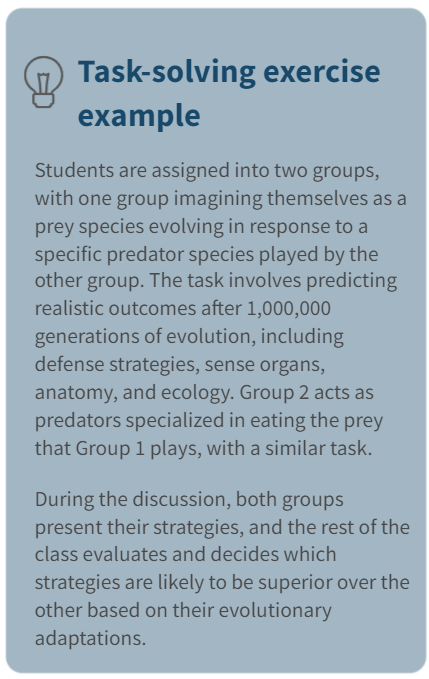Making ‘Invertebrate Zoology’ come to life
Course Summary
The course ‘Invertebrate Zoology’ aims to spark student interest in the topic by implementing structured lectures, discussions, and problem-solving activities to create a familiar, yet an enjoyable learning environment. Studying and appreciating invertebrates is challenging, as it comprises a large and diverse group of organisms. There are also many negative associations and attitudes towards the creatures, including fear and disinterest. Therefore, the goal is to showcase the interesting and endearing aspects of invertebrates, aiming to increase students' engagement and curiosity in the subject.
Course Design
The course consists of 14 lecture-seminars, each lasting 1.5 hours, with a focus on short lecture segments, active discussions, group work, student presentations, and trivia games. There are also 8 practical sessions, also lasting 1.5 hours, involving various tasks based on observing preserved specimens, with answers and drawings compiled in a portfolio. The learning outcomes include enabling students to learn zoology in an independent manner, gaining a basic overview of invertebrate morphology, physiology, ecology, and systematics, and being able to discuss topics related to the importance of anatomy, physiology, evolution, and distribution of invertebrates.
The general framework of the course covers 32 phyla (a botanical classification) in the course. They are represented in a phylotree and in each lecture, the position of the focal group on the phylotree is indicated.
The course follows a structured approach with students actively engaging in the learning process. Each lecture includes warming-up activities, interactive lectures, student oral presentations, task-solving exercises, and concludes with a trivia game. The warming-up involves individual and group tasks, followed by informative lectures focused on phyla and subphyla, with discussions around the phylotree framework. Students make presentations on their assigned species and engage in problem-based exercises related to invertebrate groups. The course ends with a fun trivia game, where students create questions and play in groups, earning extra credits for successful participation.
The practical sessions focus on in-depth introductions to larger or species-rich groups of invertebrates. Various tasks are applied, such as drawing and marking anatomical structures, answering questions about anatomy and ecology, and conducting tasks in the museum. The students observe preserved specimens and inspect body parts under the microscope. All these tasks are compiled into a portfolio and evaluated at the end of the practical sessions.
Contact:
Prof. Toomas Esperk
